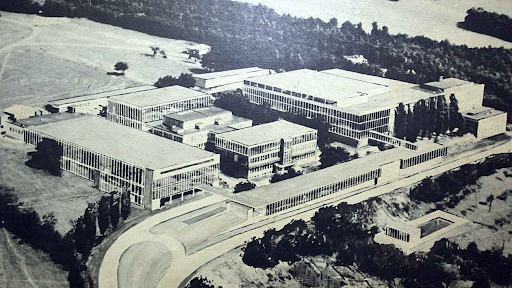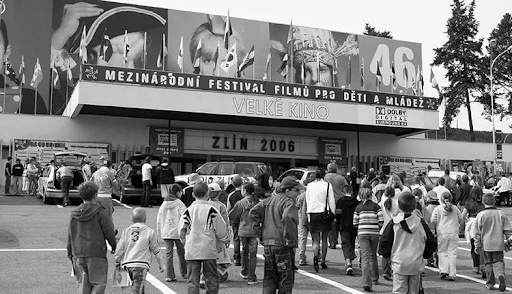The History of Zlin Film Studios

To most observers, Zlin is a sleepy, medium-sized provincial town in South-Eastern Czech Republic with a population of 73,000. But in the world of animation, it is world-renowned. And that's all because of one family and the film studio they built there. This is the remarkable story of Zlin Film Studios and the Bat'a family.
The Bat'a FamIly Opens a Shoe Factory.
Tomáš Baťa was one of the great visionary entrepreneurs of the 20th century. He set up the T. & A. Bata Shoe Company in Zlin in 1894 and over the next few decades, this family-run business expanded rapidly, thanks partly to the massive demand for shoes during WWI.
Baťa visited factories in America to see modern production line methods and returned home to revolutionise the shoe-production industry. More than having just a progressive approach to his business, he also implemented his vision for the city of Zlin itself, addressing urban planning, affordable workers' housing and social infrastructure. Today Zlin still retains the remarkable architectural legacy that Bat'a believed was crucial in providing a good environment for his workers. As the company expanded internationally throughout the 20th century, so did its ideas and influence.

Seeing the Future
Baťa understood the importance of new methods of marketing and distribution. He also realised that the medium of film would play an important role in marketing. In 1928, he set up a film and photography unit in the Baťa advertising department. It was responsible for creating newsreels and commercials which would then be then shown in cinemas but the production was outsourced to studios in Prague.
Tomáš Baťa tragically died in a plane crash in 1932. His brother Jan Antonin took over the company but he continued developing and expanding the company along the same principles and the activities of the film and photography unit grew. The main focus was on promotional films for the company but also expanded into educational films and documentaries. But it didn't stop there.
Young screenwriter and director Elmar Klos was only 25 when he joined the unit in 1934 but his arrival would have a profound effect on the future of Czech film and animation. He bought a production team of producer Ladislav Kolda and cameraman and editor Alexander Hackenschmied with him and in the next year, construction began on a new film studio in Zlin, designed by architect Vladimir Karflik. The studio was completed within a year and named FAB (Filmove Ateliery Bat'a)
The team also made a trip to Hollywood, visiting the Disney studios and bringing back new production technology and new ideas on how film and animation could be made. The reputation of the studios begins to grow and attracted a growing pool of film talent. Although production was primarily for films for the Bata Company, filmmakers were also given freedom to use the facilities for other films and animation. In 1937 the studio won the gold medal at the World Exhibition in Paris for the film The Road Sings. Soon the 'other films and animation' had become more important than Bata commercials.
Nazis, Communists and Filmmakers
Despite the disruption that WW2 brought, the studios, now under German control, continued to create films and attract top filmmakers. Although some artists fled the new Nazi regime, other significant filmmakers arrived. In 1942, Hermína Týrlová shot the first Czech animated puppet film here - Ferda the Ant. Karel Zeman arrived at the studios and began working on his unique projects. It's here that he went on to make Journey to the Beginning of Time, An Invention for Destruction and The Fabulous Baron Munchausen. Týrlová and Zeman became key figures in the Czechoslovakian animation scene and their presence at FAB became a magnet for other filmmakers - both animation and live action.
Directors such as Otakar Vávra, Vladimír Borský, Vladimír Slavinský and Oldřich Lipský were all drawn to the creative hothouse of FAB. The famed music composer Zdeněk Liška and and the director of children's films, Josef Pinkava, also worked here.
After the Nazis left, the communists took over. Although forced to work under the censorial constraints of the new regime's political ideology, the studio continued to flourish. As part of their desire to create a strong educational system, the communists enthusiastically supported the creation of children's programmes. FAB, with its established animation infrastructure, became an obvious centre of operations to carry this out. During the next few decades, some of the greatest czech animation was created at FAB.

Zlin Film Festival
With so much filmmaking activity in the area, it made perfect sense to hold a film festival in Zlin. The first such festival was called Film Harvest and held in Zlin in 1941. More than anything, it was an act of cultural and political defiance and was attended by the Czechoslovakian film community but as the war dragged on, it became impossible to continue it.
The second incarnation of the festival arrived in 1961 as The 1st International Film Festival for Children and Youth. As the name suggests, the focus was on children's films. The venue for the festival was in Zlín's Grand Cinema, the largest cinema in Central Europe when it was built in 1932 with a capacity of over 2,500.
It was one of the first festivals of its kind in the world and is still going strong today, passionately promoting children's film and tv with a strong animation element.
Post 1989 and Zlin today
The collapse of the Soviet regime brought a period of upheaval and uncertainty to FAB. Without the security of central funding, it had to adapt to a free market economy. The production facilities changed name and ownership several times. Production output fell because of the reduced financing and support but gradually, as the new Czech Republic economy and cultural infrastructure became more stabilised, the decline was halted and then reversed.
Today, although the golden years of Czech animation have long gone, Zlin Film Studios is thriving and continuing to create quality films.
In the studio complex there are studios, a film lab, production companies, and a film college as well as the offices of the Zlin Film Office, the regional film centre.
Although films continue to be made in Zlin, the shoe industry there hasn't fared as well. The shoe factory closed in the 1990s and being Zlin's main employer, the town suffered economically. The Bata Corporation had long since diversified internationally and today remains a major shoe manufacturer and retailer.
Zlin may have become a sleepy provincial town again but the legacy of Tomáš Baťa and his family remains - in the wonderful functionalist architecture that can still be seen there… and in Zlin Film Studios.
